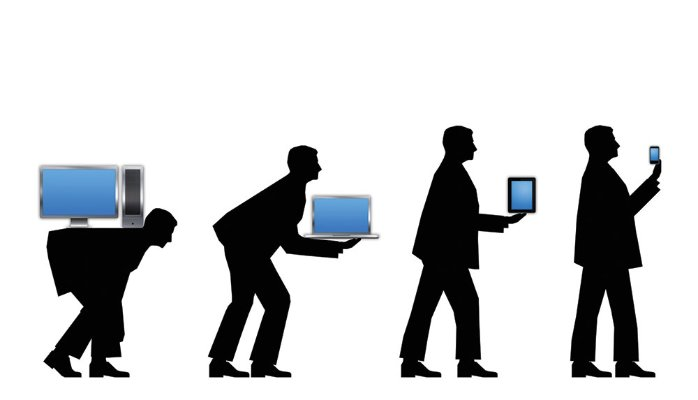
I am writing this from our office in Sheffield. But I could easily be writing this from our Dublin HQ, from home… even at a local coffee shop. Or a non-local one. I have made notes for this article using my mobile phone and tablet – both of which synchronise up to the cloud so those notes are always available whatever device I am on. I have jotted down ideas whilst at the airport, on a train, sat in an office and at those ubiquitous coffee shops and I am weaving them together now for this piece.
Sound familiar to how you work? Well, you may recall it wasn’t possible just a few years back. It wasn’t so long ago that we were chained to desks. Work had to be done from an anchored location. This was due to the fact we had to be ‘wired in’ for power and for internet connectivity… before that? No internet, just wired for power.
With the advent of mobile to smartphones, tablets, cloud and wireless, we really are embracing new ways to work. Mobility, as it is known, is helping to release us from the confines of our office blocks and nine to five routine. Need to take your kids to school? No problem, you can do this and still respond to that meeting request for the afternoon. Want to grab a bargain in the sales at lunch? Go ahead! You can do this and still start the team sales call on the way back.
That coveted ‘work-life balance’ starts to feel achievable when you can manage your work around your life… you become more ‘on demand’ to ‘work tasks’, applying yourself as required and managing your life needs around those. This is working to live.
On top of this, there are also the technologies that enable us to remotely connect with people inside our organisations (instant messaging, webcasts, video conferencing, etc) and also outside (Twitter, Linked In, Slack) meaning we are more connected and engaged than ever before. Have an idea? Share it. Don’t have a clue? Ask your community… become the hive mind. This is great!
Is that how your employer sees it? In many cases yes. And then some. In larger organisations in particular, the chance to downsize on office space as employees migrate to their home offices has obvious immediate financial benefits, with less power and lighting needed, the chance to sub-let unused space or even move to smaller premises is hugely attractive to organisations, all who no doubt have a mandate to reduce costs.
More indirectly realised benefits for companies include additionally worked hours. There are many articles that highlight the fact that employees empowered in such a way as to manage their own time tend to spend longer working and are happier, more productive and motivated because of it.
Sounds fantastic, doesn’t it? Of course it does! But all of this brave new world is not without its challenges and risks. Company headaches include the re-writing of employee handbooks to incorporate social media interaction. The online do’s and don’ts. Security teams are struggling to find ways to protect that all-important corporate network whilst still giving employees the freedom to spread their wings and their devices, not an easy task.
So, where to begin? You probably already have and either instigated it, or were unwittingly being sucked in by the virtual vortex. You were probably dragged in a multitude of directions as the technology evolution gathered pace, employees started using their own devices to connect to the corporate network as well as their own personal mail and social media accounts. How are your policies holding up? Do your employees even know what they are? Have you seen your latest, confidential client presentation on SlideShare?
At I.T. Alliance, we see a lot of companies like yours. We spend a great deal of time helping them understand how to think about the things they hadn’t contemplated before. How to embrace the change that is inevitably happening to us all. How to make sure your policy-making and governance is resilient enough to cope with the technology evolution without marginalising your progressively technologically-savvy workforce. Equip them to take you forward.